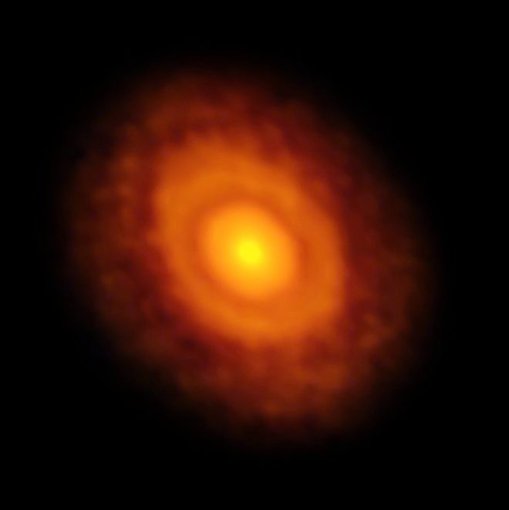
July 19, 2016
Research Highlight
Rethinking the Snow Line

This planet-forming disc around the young star V883 Orionis was obtained by the European Southern Observatory’s Atacama Large Millimeter/submillimeter Array (ALMA), a prime site for radio astronomy. The star is a state of “outburst,” which has pushed the water snow line further from the star and allowed it to be detected for the first time. The dark ring midway through the disc is the water snowline, the point from the star where the temperature and pressure dip low enough for water ice to form. Source: ALMA (ESO/NAOJ/NRAO)/L. Cieza
In every planet-forming disk there’s a point where the heat from a host star needed to keep H2O molecules as vapor peters out, and the H2O becomes a solid crystal. This is the snow line, and it looms large in most theories of planet formation.
Most broadly, planets formed inside the snow line will generally be rocky and small — a function of the miniscule dust grains that begin the planet forming process. But outside the snow line the grains get coated by the icy H2O and so are much bigger, leading to gas and ice giant planets.
The existence of water snow lines (and for other molecules, too) is nothing new, but an image of a water snow line would be. And now an international team led by Lucas Cieza of Universidad Diego Portales in Santiago, Chile, has found the water vapor/ice line around a very young star 1,350 light-years away. The results were published in the journal Nature.